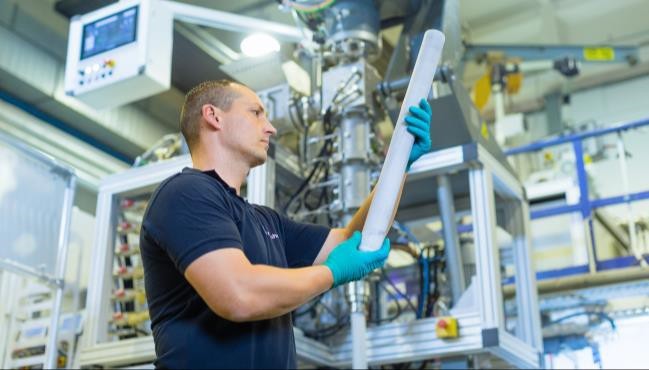Altech said the funds will be used to advance the definitive feasibility study for a 100 MWh plant for production of its Cerenergy sodium-chloride solid state batteries and finalise construction of a 10,000tpa silumina anodes pilot plant. Both projects are to be constructed on land owned by Altech in Germany.
The funds were raised through a $3 million placement as well as an entitlement offer partially underwritten by major German shareholders Deutsche Balaton and Delphi.
Martin Stein, chief financial officer of the Perth-based Altech Batteries, said he is extremely pleased with the support as the company looks to maximise the opportunities linked with the surge in demand for battery energy storage solutions.
“This sends a strong message of support for both the Cerenergy and Silumina Anodes battery projects,” he said. “Funds received will be applied to both of these projects.”
The first of those projects is Altech’s joint venture collaboration with German research organisation Fraunhofer IKTS which seeks to commercialise a facility that will produce 10,000 individual 10 kWh Cerenegy battery modules each year to provide solutions for the stationary storage market and the long-duration energy sector.
Altech claims its Cerenergy technology, which relies on sodium ions commonly found in table salt and avoids using rare and expensive metals such as lithium, cobalt, graphite and copper, can reduce costs by up to 40% compared to lithium-ion batteries which dominate the global energy storage market.
Altech is also aiming to secure a share of the short-period energy storage market with its silumina anodes product which incorporates high-purity alumina (HPA) coated silicon and graphite into the anode of lithium-ion batteries.
The company is progressing plans to develop a facility in Germany which would produce anode materials to supply Europe’s surging lithium-ion battery and EV markets.
The plant would combine Altech’s HPA and proprietary coating technology with regular battery-grade graphite to produce an anode material that it said has about 30% higher retention capacity than traditional graphite-only anodes.
This content is protected by copyright and may not be reused. If you want to cooperate with us and would like to reuse some of our content, please contact: editors@pv-magazine.com.









3 comments
By submitting this form you agree to pv magazine using your data for the purposes of publishing your comment.
Your personal data will only be disclosed or otherwise transmitted to third parties for the purposes of spam filtering or if this is necessary for technical maintenance of the website. Any other transfer to third parties will not take place unless this is justified on the basis of applicable data protection regulations or if pv magazine is legally obliged to do so.
You may revoke this consent at any time with effect for the future, in which case your personal data will be deleted immediately. Otherwise, your data will be deleted if pv magazine has processed your request or the purpose of data storage is fulfilled.
Further information on data privacy can be found in our Data Protection Policy.